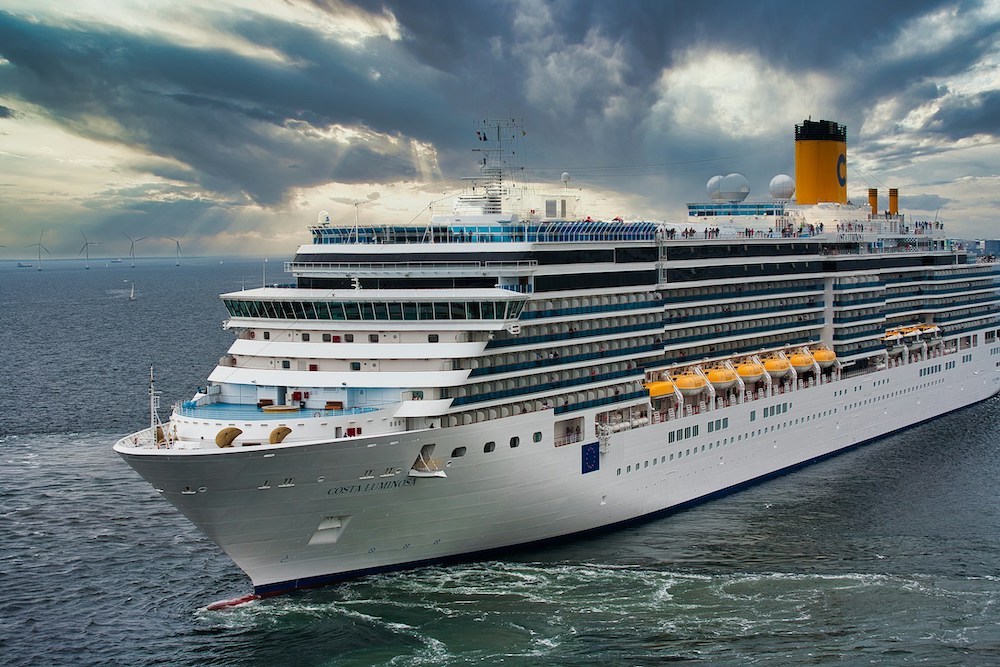Here’s everything your attendees need to sail smoothly on a meeting or incentive at sea
Reading Time: 4 minutes
When your meeting sets sail, the last thing you want is an attendee who forgot their passport, packed only flip-flops, or missed the ship because they trusted Google Maps instead of the boarding pass. Cruises aren’t like land-based programs — the Wi-Fi is slower, the dress codes stricter, and “all aboard” really means all aboard. A clear, no-nonsense checklist keeps everyone from drifting off course. Think of it as your life raft for logistics: ensuring attendees show up on time, dressed right, tech-ready, and ready to actually enjoy the incentive instead of scrambling at the gangway.
Travel Documents & Logistics
Passport/ID: Carry a valid passport (expiration ≥6 months beyond cruise end). For U.S. closed-loop cruises you may use a birth certificate + ID, but a passport prevents issues (U.S. Customs & Border Protection). Verify visa or vaccination requirements for each foreign port.
Travel Insurance: Cruise-specific insurance can cover delays, baggage loss, or medical emergencies (Allianz Travel Insurance).
Check-in & Arrival: Complete online check-in early (many lines require it ≥3 days before sailing). Arrive at the port terminal at your assigned time slot; complete remaining steps ≥2 hours before departure and be onboard ≥90 minutes prior (Carnival Cruise Line). If flying in, arrive a day early to avoid delays.
Carry-on Essentials: Keep cruise documents, passport/ID, insurance, and itinerary in your carry-on. Include chargers, power bank, a change of clothes, swimsuit, and medications. Seasickness remedies are best kept in your carry-on in case luggage is delayed (Royal Caribbean Blog).
Bags: Label all luggage with your name and contact info. Carry valuables with you rather than in checked bags.
Packing & Dress Code
Daywear: Comfortable casuals (swimsuits, cover-ups, shorts, T-shirts, athletic wear). Add hat, sunglasses, sunscreen, and sturdy walking shoes for excursions (Celebrity Cruises).
Meeting Attire: Business casual is expected: slacks/jeans with collared shirts for men, dresses or slacks with blouses for women (Cruise Critic). Pack a blazer or jacket for meetings and dinners.
Formal Nights: Some cruises include formal or gala evenings. Bring a suit or dinner jacket, or a cocktail dress or pantsuit (Cruise Critic).
Weather & Climate: Bring a sweater or shawl for cool evenings. Rain gear is helpful in tropical regions.
Cultural Considerations: Dress modestly in temples or conservative ports. Avoid clothing with offensive graphics (Royal Caribbean Blog).
Additional Gear: Daypack, refillable water bottle, binoculars, flashlight, universal adapter, and power strip (if permitted).
Onboard Conduct & Tipping
Etiquette: Attend safety drills, be punctual for meetings, and keep noise to a minimum in cabins (CLIA – Cruise Lines International Association).
Ship Services: Most lines add $12–$16 per person/day as a service charge to cover crew gratuities (Cruise Critic). Bring small bills for additional tips.
Drink & Dining: Bars/restaurants usually include an 18–20% service charge. Room service: tip $1–$2 per order (Cruise Critic).
Health & Safety: Stay hydrated, use seasickness precautions, and know the location of onboard medical facilities.
Further Reading: Disney Treasure: A Playground for Grown-Ups
Shore Excursions & Port Visits
Booking Excursions: Cruise-line tours guarantee return to the ship. Independent tours can be cheaper but carry risk; latecomers are not held for (Royal Caribbean Blog).
Timing & Itinerary: Ports like Rome (Civitavecchia) or Paris (Le Havre) may require long transfers—plan excursions accordingly (Cruise Critic).
Local Customs & Tipping: Tip local guides and drivers generously: 15–20% of the tour, or $5–$10 per person for a half-/full-day tour. Porters: $1–$2 per bag (Cruise Critic).
Health & Safety Ashore: Carry bottled water and sun protection. Keep valuables secured in the ship’s safe. Always be back by the posted “all aboard.”
Technology & Connectivity
Internet: Ship Wi-Fi costs $15–$30 per day per device, with slower speeds than land-based networks (Cruise Critic). Buy packages in advance for savings.
Apps: Download your cruise line’s app pre-departure; many include messaging, schedules, and reservations (Cruise Critic).
Devices & Power: Pack chargers, power banks, adapters, and dongles for presentations. Foothold outlets may be limited.
Data Use: Turn off background syncing to avoid high data charges. Download materials and entertainment before sailing.
Communication Strategy with Attendees
Multi-Channel Delivery: Provide the checklist by email, in PDF form, and through the event app. Centralize updates in one platform to avoid confusion (MeetingsNet).
Timeline of Reminders: Send phased communications—basic info one month before, full checklist 1–2 weeks out, and final reminders the day before sailing (MeetingsNet).
Engagement: Use visuals and interactive Q&As to engage attendees. During the kickoff meeting onboard, review key tips.
Follow-up: Deliver daily updates via app announcements or printouts. After the cruise, request attendee feedback.
Any thoughts, opinions, or news? Please share them with me at vince@meetingsevents.com.
Photo by Daniele D’Andreti on Unsplash





